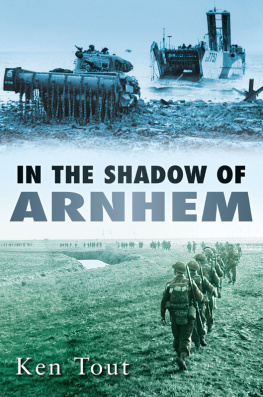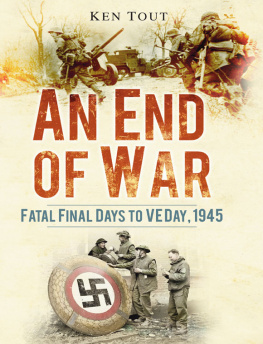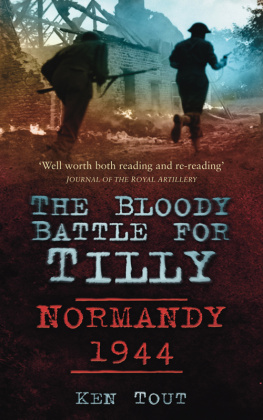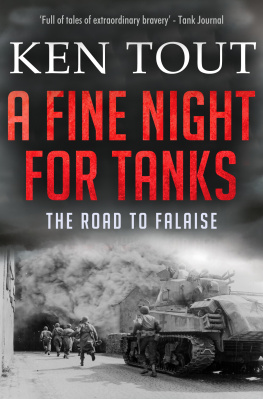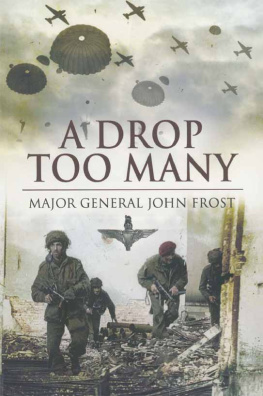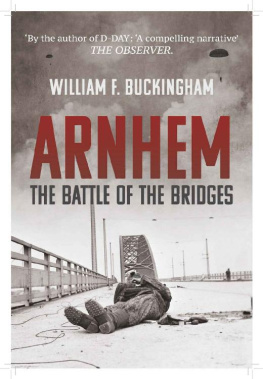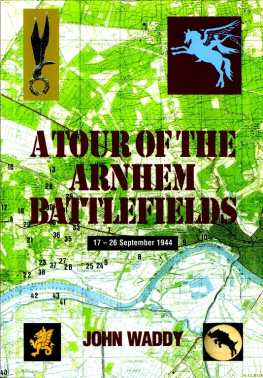IN THE SHADOW OF
ARNHEM
IN THE SHADOW OF
ARNHEM
THE BATTLE FOR THE LOWER MAAS,
SEPTEMBERNOVEMBER 1944
KEN TOUT

First published in 2003
This edition first published in 2009
The History Press
The Mill, Brimscombe Port
Stroud, Gloucestershire, GL5 2QG
www.thehistorypress.co.uk
This ebook edition first published in 2013
All rights reserved
Ken Tout, 2003, 2009, 2013
The right of Ken Tout to be identified as the Author of this work has been asserted in accordance with the Copyright, Designs and Patents Act 1988.
This ebook is copyright material and must not be copied, reproduced, transferred, distributed, leased, licensed or publicly performed or used in any way except as specifically permitted in writing by the publishers, as allowed under the terms and conditions under which it was purchased or as strictly permitted by applicable copyright law. Any unauthorised distribution or use of this text may be a direct infringement of the authors and publishers rights, and those responsible may be liable in law accordingly.
EPUB ISBN 978 0 7509 5132 6
Original typesetting by The History Press
To those who were killed or deprived of a normal life in costly but unsung battles back down the Arnhem road. The wider story of their sacrifices and heroism has been neglected because of popular concentration on the equally heroic but unfortunate epic of the bridge too far at Arnhem.
Contents
Acknowledgements
In preparing this book I have been fortunate in the number of participants in these same battles who have since produced works of historical or literary importance, particularly Denis Whitaker, George Blackburn, Bill Close, Ian Hammerton and W.R. Bennett. I therefore make no excuse for drawing on their reminiscences as they have kindly encouraged me to do. Sadly Denis died during the period of my research but his widow and co-writer, Shelagh, has continued his encouragement.
A younger writer of a monumental piece of research on Walcheren, Paul Crucq, has also generously opened his files and contacts to me. Professor Terry Copp and his Canadian Military History journal are fundamental sources on Canadian operations.
Several people in Holland and Belgium have gone out of their way to help, including Luc van Gent, Karel Govaerts, Louis Kleijne, Freddy Pille, Dr Ger Schinck and Jan Wigard.
In the UK a number of people pointed me on to, or helped me make, further contacts. Among these were John Brown, Bill James, Don Scott and others mentioned in the notes. Tess Carpenter, who was also there, was at hand for translations. As always, archivists were ever ready to support, including those at the IWM, Mrs Beech at Keele University Air Photo Library, David Fletcher at Bovington Tank Museum, and the staff of the York and Lancaster, Leicesters, Shropshire and Welsh Museums, as well as the Polish Institute. Now fully on stream is the relatively new Second World War Experience Centre, founded by First World War expert Dr Peter Liddle in Horsforth, whose staff and volunteers were at my service, and to which I am consigning my research papers from previous books.
Among my own 1NY comrades, sadly Bill Moseley died during the writing of this book, but his widow, Jean, was happy to extend his permission to quote. Kenny Jack has also left us, cheerful to the end. Rex Jackson, MM, continues to find unusual books for his old tank mate. A special mention for Reg Spittles: not only is he a continuing fount of reminiscences, he now visits Northampton schools to speak about the realities of war, reflecting the work done by Louis Kleijne and others around the battlefields. My wish would be that more UK schools would open their doors to veterans like Reg at a time when, perhaps more than any moment since 1945, the new generations need to know about the realities of oppression, aggression and liberation.
Finally, but first in the queue of the helpful and encouraging, my wife, Jai, still struggling to find dustable areas amid the chaos of my office, but, more often, dispelling the dust of years from my brain. And the staff of Sutton Publishing: Jonathan Falconer, Nick Reynolds and a number of others at Sutton who have always been at hand to help with sensitive and professional advice. Thank you to them all and apologies to any I may have omitted, either above or in the complicated search for personal permission to quote.
CHAPTER ONE
Beggary and Bravery
The people branded as lunatics stood and watched the sane men shooting each other and wondered. Was this some strange form of entertainment put on for their benefit by the establishment? Some perverse ballet? Some horrific cabaret?
The inmates were not to know, nor could they have appreciated, that they were about to be present at an act of bravery as incredible as any that might be found in the annals of the British Army. A new name was to be added to the elite roll of the bravest of the brave: names like that of John Frost at the Arnhem bridge, Leonard Cheshire, Lord Lovat, Wg Cdr Guy Gibson, Lt Col H Jones, John William Harper.
John William who?
Like a ready-made fortress le Dept de Mendicit straddled the Allied line of advance on 29 September 1944. The rank and file of the British Army were notorious for their ability to mispronounce foreign names like Wipers (Ypres) in 1914 or Buggers Bus (Bourguebus) in Normandy 1944. Now Mendicit, with its accented final tay, was a tough one, and instantly became the Monday City for many. Few front-line soldiers in 1944 spoke French and therefore might not know that Mendicit meant Beggary: Dept de Mendicit the Beggary Deposit.
Both John William Harper, Jack to family and friends, and John R. Dean, Dixie to his mates, were worried about the Monday City. It was just a blob on the map between Rijkevorsel (pronounced rake-for-sell) and Merxplas in north Belgium. They had been told that it was a lunatic asylum and that the loonies were still inside. So there would be no devastating air raid or huge artillery barrage to mash the buildings into ruins before the infantry attack. Nothing larger than hand-thrown grenades or small mortar bombs, delivered with pin-point accuracy by the company mortar sections, would be used.
The attackers, from the Hallamshires and Leicestershires, had at first envisaged a vast, solid, single building like a British asylum. When Harpers company were told that they had to find a back way in, they anticipated charging straight up to the edifice and smashing through doors and windows while under direct fire from defenders who would be using patients as protection. In fact the Dept de Mendicit was a totally different proposition. It was more of the style of a huge military camp. The confusion was not confined to front line troops, for 1 Corps HQ itself reported the Hallams and Leicesters attacking a factory that day.
The original name of the institution, founded in 1822, would have confounded even the most capable linguists in the attacking 49th Polar Bear Division: Maatschappij van Weldadigheid voor de Zuidelijke Nederlanden.
King Willem I of the Netherlands (Belgium was then part of the Netherlands) had instituted a colony for tramps. In 1870 the hospitality was extended to include paupers, beggars and drunkards, and gained its 1940s name. Gradually parts of the compound were turned over for use as a civil prison.
It was the occupying German authorities of the First World War who set up a lunatic asylum there, providing secure accommodation for mentally ill people from Belgium and northern France, many of whom could, at that time, be treated only by restraint methods. Just before the Second World War, Jewish refugees were also offered shelter. Then with the 1940 German occupation Belgian and Dutch hostages were interned in the prison section.
Next page
